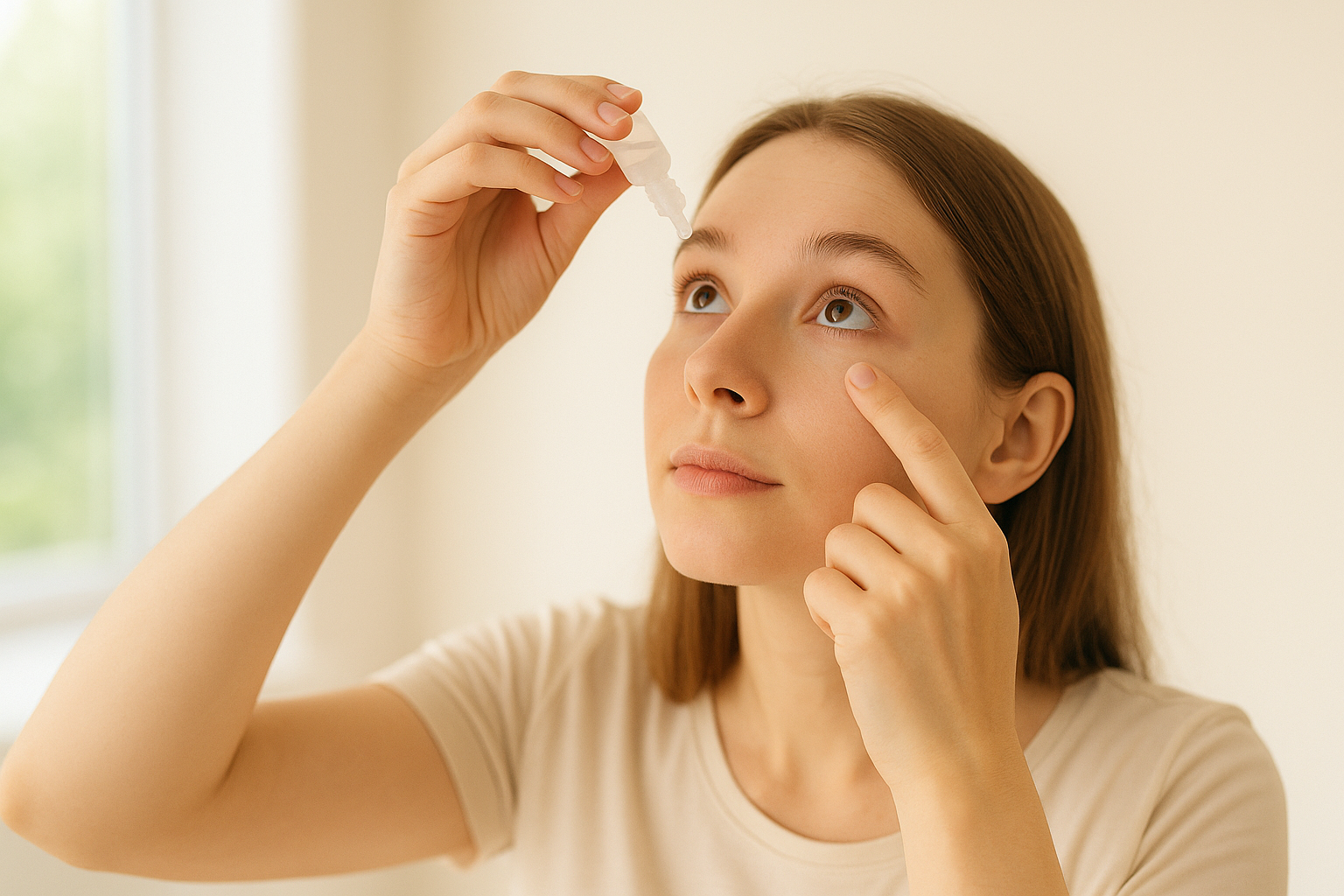
Are you using artificial tears correctly? All about dry eyes
Do you feel dry eyes at the end of the day and don't know why?

Sometimes it's while looking at my phone. Other times, it's after spending a lot of time in front of the computer. Or simply when I'm outside, whether it's windy or hot.
Dry eyes are more common than we think, and many people have already incorporated artificial tears into their daily routines... although they don't always use them correctly.
This article will help you understand why this happens, what types of tears exist, and most importantly, how to use them properly so they truly bring relief.
What is dry eye (and how to know if you have it)
Dry eyes occur when your eyes don't produce enough tears or the quality of those tears isn't adequate. This can cause discomfort, eye strain, or even blurred vision at certain times of the day.
Some signs that you may have dry eyes:
-
Itching or burning
-
Frequently red eyes
-
Sensation of grit or having “something” in the eye
-
Discomfort when blinking or wearing contact lenses
-
Vision that becomes temporarily blurred
You don't have to experience all of these symptoms at once. Often, just one (such as the need to close your eyes to rest) is already an indication that something is wrong.
Types of artificial tears: Which one is right for you?
Not all artificial tears work the same. Some are designed for occasional use, while others are perfect for incorporating into your routine.
These are the most common:
-
With preservatives : Their advantage is that they last longer once opened, but if you use them many times a day or for weeks, they can irritate the eye.
-
Preservative-free : recommended if you need to apply them more than 3 times a day or have particularly sensitive eyes.
-
With hyaluronic acid : they provide more intense hydration. They're perfect for people who experience severe dryness or who wear contact lenses for long periods of time.
-
Single-dose : These come in individual packages that are thrown away after opening. They're safer in terms of hygiene, but less convenient.
-
Multi-dose : more practical, although you should check carefully whether or not they contain preservatives.
Every eye is different. Sometimes you have to try several until you find the one that really works.
The most common mistakes when using them (and how to avoid them)
Although they may seem simple to apply, many people unknowingly make mistakes. Some of the most common ones:
-
Use them only when there is discomfort, rather than as a preventative measure.
-
Apply them with the contact lenses in, without checking if they are compatible.
-
Save an opened single-dose container for “later” use (it may become contaminated).
-
Using the same brand for years, even if it doesn't moisturize like it used to.
-
Do not check the composition if you have allergies or eye sensitivity.
Small details that, when added together, can mean you don't notice any improvement even if you use them daily.
Do contact lenses make dry eyes worse?

Not necessarily. But they can have an impact. Some contact lenses retain moisture less well or make it harder for oxygen to reach the eye. That's noticeable at the end of the day.
The good news is that there are contact lenses designed to prevent just that. For example, at OpticVue, we work with high-oxygenation materials and comfortable designs that help keep your eyes hydrated even after several hours of wear.
If you experience dry eyes when wearing contact lenses, it's important to check whether they're right for you or if you need a model that's more compatible with sensitive eyes.
What you can do in your daily life to improve dry eyes
In addition to using artificial tears correctly, there are some simple habits that can help you:
-
Take visual breaks every 20 minutes if you work with screens (20-20-20 rule).
-
Avoid direct air from heating or air conditioning.
-
Blink more consciously, especially when looking at your phone.
-
Use humidifiers if you are in a dry environment.
-
Consult your pharmacist if discomfort persists.
Eye health depends greatly on small daily habits. Paying attention to them can make a big difference.
Do you notice your eyes are dry with your contact lenses?
If you wear contact lenses every day and end the day with red or irritated eyes, you may need to change the type.
At OpticVue, our HighOxygen contact lenses are designed to take care of your eyes from the first minute:
→ More oxygen, more hydration, less discomfort.



Leave a comment
This site is protected by hCaptcha and the hCaptcha Privacy Policy and Terms of Service apply.